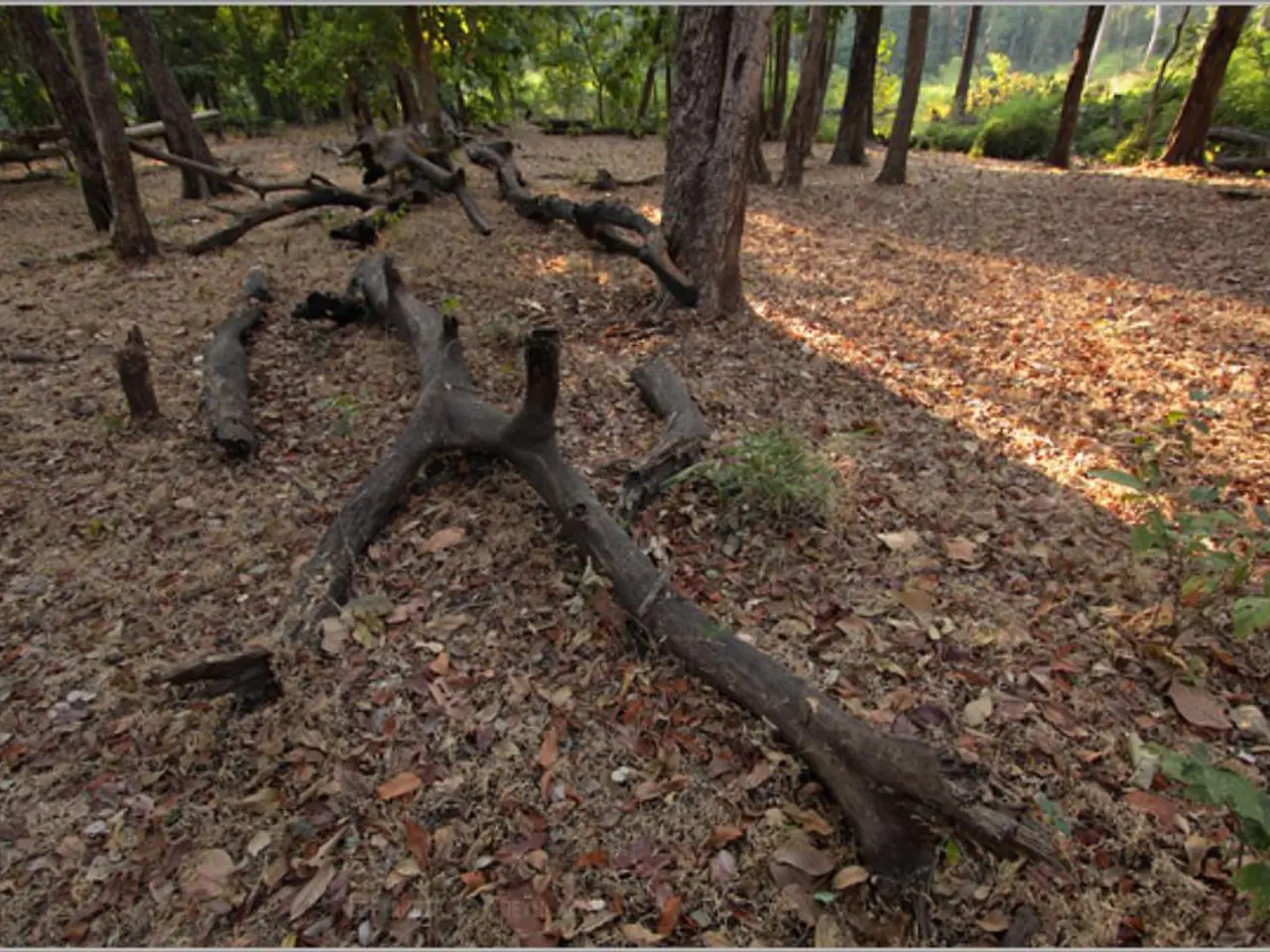Picking Branches for Air Layering in Bonsai: Identifying Appropriate Candidates
In the world of bonsai, air layering is a popular technique used to create new plants from existing branches. To ensure the success of this method, careful selection and preparation of the branch are crucial. Here's a step-by-step guide on how to select a suitable branch for air layering.
When choosing a branch, look for one that is flexible, ideally cane-producing, as these types tend to root more readily with layering techniques. The branch should be healthy and vigorous but not too old or very thick and woody. Younger, semi-hardwood branches root best.
The branch should be positioned so it can be easily wounded and wrapped, often near where it meets the main stem or trunk. Lightly wound or remove a ring of bark (girdling) to expose the cambium, enhancing rooting. Wrap the wound with moist sphagnum moss and seal tightly with plastic or similar material to retain moisture and allow root formation.
Timing is essential; the early growing season in spring is ideal because the plant is actively growing, and rooting potential is higher. This careful branch selection and preparation are critical to develop a strong nebari (surface roots) and successful root system, which are keys to bonsai health and aesthetics.
While it is technically possible to air layer multiple branches on the same tree, it is generally not recommended, as this can cause undue stress to the tree and reduce the success rate of root formation on individual branches. To achieve optimal results, you must strike a balance between flexibility and rigidity, as overly flexible branches may lack the structural integrity required for a healthy bonsai.
Air layering can revitalize branches with existing roots, but it's vital to assess their viability, ensuring the roots are healthy and robust enough to support a new bonsai, lest they wither away. Matching branches with bonsai style is a critical aspect of air layering, as it guarantees the newly created bonsai will conform to the desired aesthetic and structural standards.
Inspecting for hidden defects is a critical step in evaluating a branch for air layering, as even slight imperfections can lead to failure or poor performance. Root systems that are well-established and robust are essential for successful air layering, as they provide the necessary foundation for the development of a healthy, thriving bonsai.
Air layering typically takes 1-6 months to produce roots, depending on factors such as tree species, climate, and care. During this time, a gradual and controlled shift from parent tree to independent bonsai occurs. When examining branch flexibility, gently bend the branch to assess its pliability. A branch that snaps or cracks easily is likely to be brittle and prone to damage, making it a poor candidate for air layering.
Lastly, avoid dead or diseased wood when selecting branches for air layering, as these can spread to the rest of the tree and compromise the health of the new bonsai. By following these guidelines, you're well on your way to creating a thriving bonsai through air layering.
[1] Bonsai4me. (2021). Air Layering Bonsai. [online] Available at: https://www.bonsai4me.com/air-layering-bonsai/
[2] Bonsai Empire. (2021). Air Layering Bonsai. [online] Available at: https://www.bonsaimempire.com/air-layering-bonsai/
[3] Bonsai Tonight. (2021). Air Layering Bonsai. [online] Available at: https://bonsaitonight.com/air-layering-bonsai/
To further enhance your bonsai, consider exploring other aspects of your lifestyle, such as home-and-garden activities like gardening. A vibrant garden can provide an abundance of materials for bonsai care, like soil, compost, and even optional rooting mediums.
In addition, maintaining a healthy garden can inspire your bonsai technique, as you observe concepts like pruning, planting, and cultivation in action, all essential practices for bonsai.




